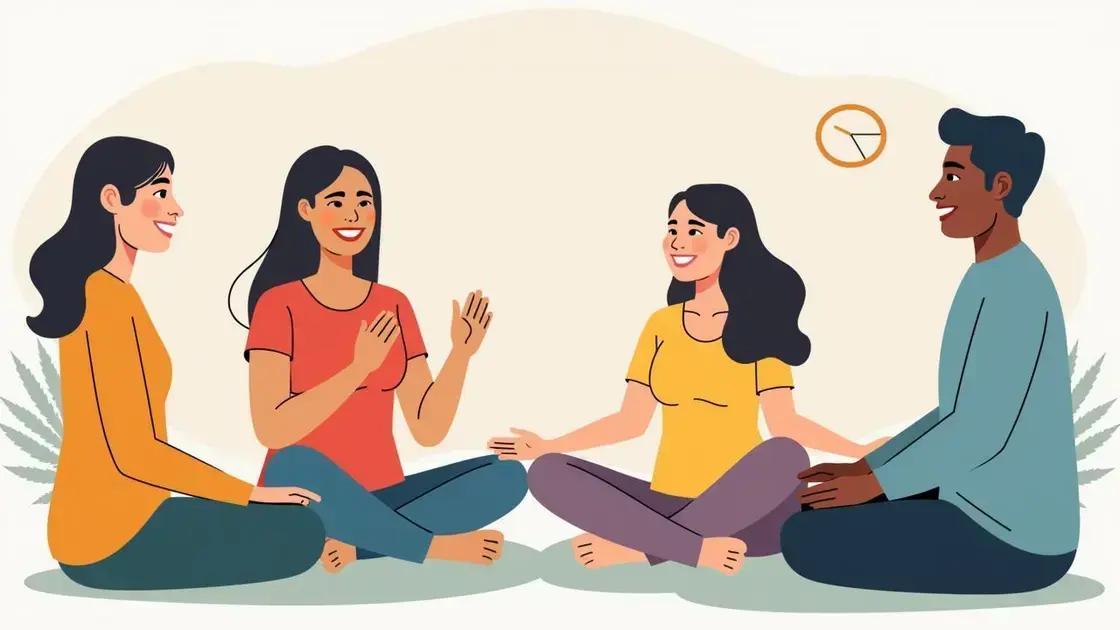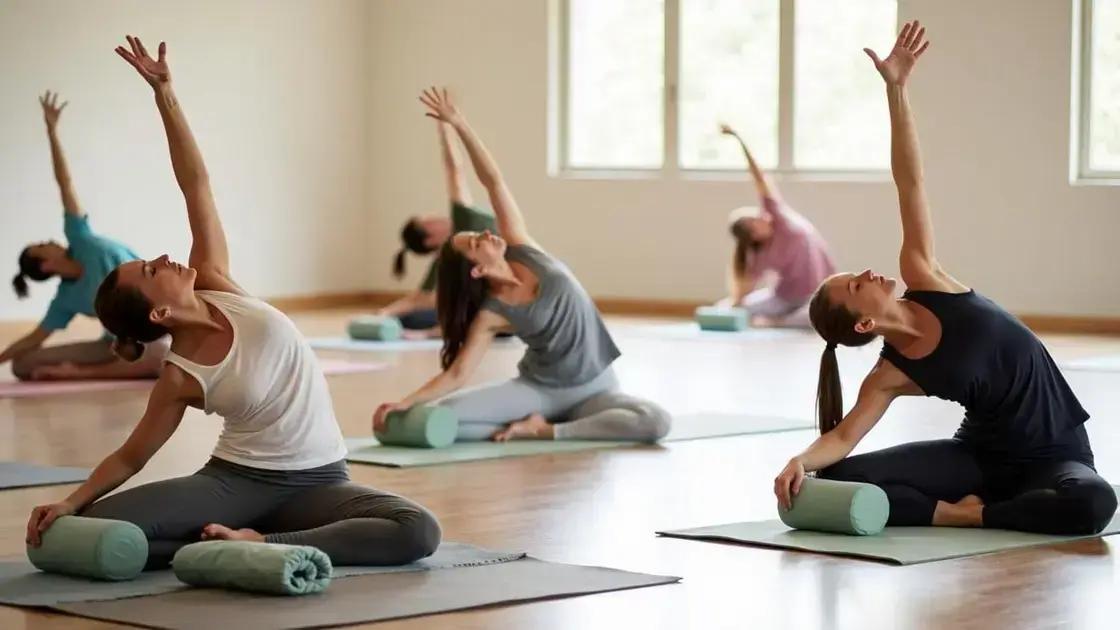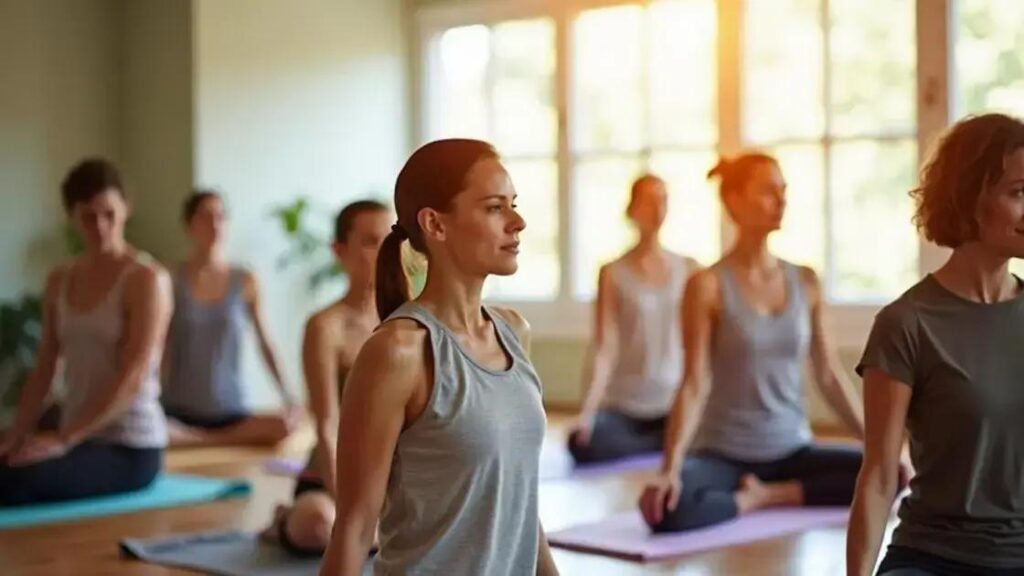Gentle yoga offers numerous benefits for chronic pain management, including relaxation, improved flexibility, and muscle tension relief. Key practices involve specific poses like Cat-Cow and Child’s Pose, along with mindfulness techniques that enhance the mind-body connection. By incorporating gentle yoga into your routine, you can effectively alleviate discomfort and enhance your overall well-being.
Gentle yoga offers a soothing approach for those suffering from chronic pain. By focusing on mindful movements and relaxation, it helps alleviate discomfort and improves quality of life. This blog explores the benefits of gentle yoga for chronic pain management, providing valuable insights and practical techniques. From understanding chronic pain to incorporating mindfulness into yoga routines, you’ll discover how simple poses can bring relief and enhance your well-being.
Understanding Chronic Pain and Its Impact

Chronic pain affects millions of people worldwide. It is defined as pain that lasts longer than six months and can result from various conditions such as arthritis, fibromyalgia, or previous injuries. This persistent pain can profoundly affect daily activities, work, and relationships.
Many individuals battling chronic pain often feel isolated and overwhelmed by their situation. They might find it challenging to engage in activities they once enjoyed. Additionally, chronic pain can lead to emotional struggles, including anxiety and depression, further complicating the coping process.
Understanding the Scope of Chronic Pain
Chronic pain can manifest in different ways. It may be constant or intermittent and can range from mild discomfort to debilitating agony. Symptoms may also include fatigue, sleep disturbances, and decreased mobility, significantly impacting one’s overall quality of life.
The Physical and Emotional Toll
The physical aspects of chronic pain are just one part of the problem. The emotional toll should not be overlooked. People dealing with persistent pain often experience feelings of frustration, helplessness, and anger. The stigma surrounding chronic pain can make it even harder for individuals to express their struggles to friends or family.
Additionally, the impact of chronic pain can strain relationships. Loved ones may not fully comprehend the extent to which chronic pain affects their partner or family member. This lack of understanding can lead to feelings of isolation for the person suffering from chronic pain.
Seeking Support and Understanding
It is crucial for those experiencing chronic pain to seek support. This can come from healthcare professionals, support groups, or friends and family who are willing to listen and learn. Education about chronic pain can help others understand what the individual is going through, fostering a more supportive environment.
In summary, understanding chronic pain and its impact is vital for managing this condition effectively. Through proper support, education, and self-care practices, individuals can find ways to cope better with chronic pain and maintain a sense of normalcy in their lives.
How Gentle Yoga Relieves Pain

Gentle yoga is an effective practice for relieving pain, especially for those dealing with chronic conditions. By incorporating slow and mindful movements, it helps to stretch tight muscles, improve flexibility, and promote relaxation.
Physical Benefits of Gentle Yoga
One of the primary ways gentle yoga relieves pain is by easing muscle tension. When individuals suffer from chronic pain, their muscles often become tight. Gentle stretches target these tense areas, gradually releasing tension and enhancing blood flow. Improved circulation can accelerate the healing process and reduce discomfort.
Gentle yoga also encourages proper alignment and posture. Many people with chronic pain develop poor postural habits, which can exacerbate their condition. Practicing the correct body alignment in yoga can help individuals recognize and adjust these habits, therefore reducing pain over time.
Mental and Emotional Relief
Mental well-being plays a significant role in pain management. Gentle yoga incorporates mindfulness and breathing techniques that help calm the mind. This relaxation can decrease perceptions of pain and promote a more positive outlook on one’s condition.
Additionally, the focus on deep breathing within gentle yoga serves a dual purpose. It not only aids in relaxation but also activates the body’s natural relaxation response. This response can help lower stress levels, which is essential since stress is known to worsen chronic pain.
Mind-Body Connection
By practicing gentle yoga, individuals can cultivate a better mind-body connection. Understanding how your body feels during different movements can empower individuals to listen to their bodies more effectively. This awareness can help them avoid activities that may trigger their pain, promoting long-term pain management.
Furthermore, this connection aids in emotional healing. As individuals learn to move in ways that feel good and relieve discomfort, they build confidence in their bodies. This empowerment can transform the way they view their chronic pain, moving from a position of limitation to one of strength.
Incorporating Mindfulness into Yoga

Incorporating mindfulness into yoga can enhance its benefits, especially for those dealing with chronic pain. Mindfulness is the practice of being present and fully engaged with the current moment. This approach can transform your yoga sessions into deep, healing experiences.
The Role of Breath in Mindfulness
One of the key elements of mindfulness in yoga is breath awareness. Focusing on your breath helps anchor your mind, creating a serene environment for your practice. By taking deep, intentional breaths, individuals can stimulate relaxation and reduce stress, which may otherwise escalate pain levels.
During your yoga practice, pay attention to each inhale and exhale. Inhale deeply, filling your lungs, and exhale slowly, releasing tension. This simple technique not only enhances mindfulness but also facilitates better oxygen flow to your muscles, promoting healing.
Body Awareness and Connection
Mindfulness encourages greater body awareness. When practicing yoga, it is essential to listen to your body and understand its signals. This means being attuned to areas that might feel tight or sore. Instead of pushing through discomfort, approach your practice with compassion and gentleness.
As you move through your poses, take moments to pause and check in with your body. Notice how different postures affect you physically and emotionally. This heightened awareness allows you to adjust moves to better suit your needs, helping prevent injury and reducing discomfort.
Setting Intentions
Before starting your yoga practice, consider setting a clear intention. This can serve as your guiding focus during your session. It may be something as simple as ‘I want to find peace’ or ‘I will be gentle with myself today.’ Having an intention helps ground your practice and reinforces mindfulness.
Throughout your class, return to your intention whenever your mind wanders. This practice helps cultivate a sense of purpose, increasing the emotional and mental benefits of yoga.
Engaging All Senses
Incorporating mindfulness in yoga also means engaging all your senses. Pay attention to the feeling of your mat under your feet, the scents in the air, and the sounds surrounding you. This multi-sensory focus brings you into the moment and can significantly enhance your overall yoga experience.
By making a conscious effort to integrate mindfulness into your yoga practice, you can create a more supportive environment for managing chronic pain. This focused approach not only aids in relaxation but also encourages emotional healing, breaking the cycle of pain and stress.
Practical Gentle Yoga Poses for Relief

Practicing gentle yoga poses can provide significant relief for those experiencing chronic pain. Here are some practical poses that are easy to perform and can be adapted to suit different needs.
1. Cat-Cow Stretch
This is a great pose for easing tension in the spine. Start in a tabletop position on your hands and knees. Inhale as you arch your back and look up (Cow), then exhale as you round your back and tuck your chin to your chest (Cat). Repeat this sequence for 5 to 10 breaths, flowing gently.
2. Child’s Pose
Child’s Pose is excellent for relaxation and stretching the lower back. Begin on your hands and knees, then sit back on your heels while stretching your arms forward on the mat. Hold this pose for several breaths, allowing your body to release any tension.
3. Seated Forward Bend
For the seated forward bend, sit with your legs extended in front of you. Inhale, lengthening your spine, and as you exhale, gently reach for your feet or shins. Keep your back straight and only go as far as comfortable. This pose helps stretch the hamstrings and lower back.
4. Supported Bridge Pose
Lie on your back with your knees bent and feet flat on the floor. Lift your hips and place a cushion or block under your sacrum for support. This position opens the chest, relieving tightness in the shoulders and promoting relaxation.
5. Reclined Bound Angle Pose
Lie on your back and bring the soles of your feet together, allowing your knees to fall to the sides. Place cushions or yoga blocks under your knees to provide support. This gentle stretch helps open the hips and can relieve lower back discomfort.
6. Legs-Up-The-Wall Pose
This restorative pose helps promote relaxation and reduce swelling in the legs. Sit next to a wall and lie on your back, swinging your legs up onto the wall. Enjoy this position for several minutes, focusing on your breath to enhance relaxation.
Remember to listen to your body while practicing these gentle yoga poses. Modify them as necessary and take your time. With consistent practice, these poses can help alleviate chronic pain and improve overall wellbeing.
Embracing Gentle Yoga for Chronic Pain Management
Incorporating gentle yoga into your routine can bring significant relief for those experiencing chronic pain. The practices discussed highlight the importance of mindfulness, physical relief, and emotional support that gentle yoga offers.
By understanding chronic pain and its impact, and learning specific poses like Cat-Cow and Child’s Pose, individuals can regain control over their bodies and reduce discomfort. Furthermore, integrating mindfulness into your practice strengthens the mind-body connection, allowing for a more holistic approach to pain management.
Ultimately, gentle yoga is not just about physical poses; it encompasses a complete wellness philosophy that fosters healing and well-being. With patience and dedication, these gentle yoga techniques can significantly enhance your quality of life.
FAQ – Frequently Asked Questions About Gentle Yoga for Chronic Pain Management
What is gentle yoga?
Gentle yoga is a low-impact form of yoga that focuses on slow movements and mindfulness, making it accessible for individuals with chronic pain.
How can gentle yoga help with chronic pain?
Gentle yoga helps relieve chronic pain by promoting relaxation, increasing flexibility, reducing muscle tension, and enhancing body awareness.
What are some effective gentle yoga poses for relief?
Effective poses include Cat-Cow Stretch, Child’s Pose, Supported Bridge Pose, and Legs-Up-The-Wall Pose, each designed to ease tension and promote relaxation.
Can mindfulness be incorporated into my yoga practice?
Yes, incorporating mindfulness through breath awareness, setting intentions, and engaging all your senses can enhance your gentle yoga practice and improve its benefits.
How often should I practice gentle yoga for chronic pain management?
It’s recommended to practice gentle yoga several times a week, listening to your body and adjusting the frequency based on your comfort and needs.
Is gentle yoga suitable for beginners?
Absolutely! Gentle yoga is ideal for beginners and those with chronic pain, as it focuses on foundational movements and encourages a compassionate approach to practice.













